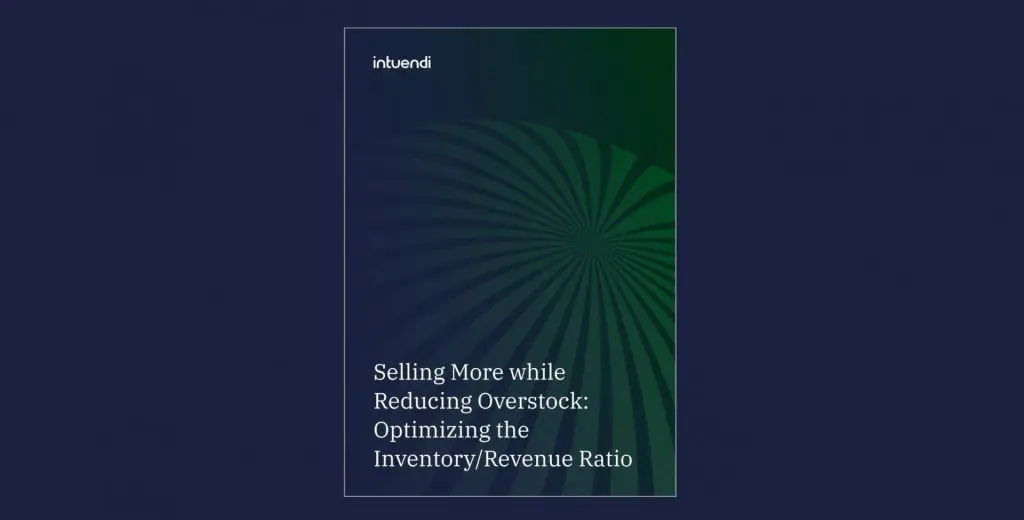In the dynamic landscape of business operations, the efficient management of inventory plays a pivotal role in ensuring sustained success, and with effective inventory management strategies, comes stock replenishment. This article aims to provide a comprehensive understanding of stock replenishment, its significance, various strategies, best practices, and steps to build an effective replenishment system.
What is Stock Replenishment?
Stock replenishment refers to the process of maintaining optimal inventory levels by restocking products as they are consumed. It is a fundamental component of inventory management, ensuring that businesses meet customer demand while avoiding both excess and insufficient stock.
What does Stock Replenishment accomplish?
The main reason for the implementation of stock replenishment is enhanced business efficiency, where stockouts are prevented, carrying costs are reduced, and customer satisfaction is improved. However, poor replenishment can lead to overstocking, increased holding costs, and dissatisfied customers. Stock replenishment is closely linked to demand forecasting, as businesses need to know well in advance about when their inventory should be updated and reordered. Consider a scenario in which a clothing retailer has failed to accurately forecast the demand for a trending shirt – the shirt flies off the shelves, and due to inaccurate forecasting, leaves the shelves barren. Not only does this result in immediate revenue loss for the company, but adds to the degradation of the store’s reputation, in which dissatisfied customers may turn to competitors for the same product. The long-term effects of poor stock replenishment efforts include consequences for customer satisfaction levels, and in turn, overall profitability. To maintain a good reputation and high customer loyalty, it is, thus, of utmost importance that good stock replenishment practices are kept to.
What Does Replenishment Time Represent?
Replenishment time is the duration between recognizing the need to replenish stock and having the replenished items available, on store shelves, for sale. Naturally, businesses aim for the shortest possible replenishment time, in order to satisfy their customer’s needs and wants. Seeing that we have highlighted the weight of importance that stock replenishment holds, let us delve deeper into the different strategies that will help one achieve better replenishment time results:
- Real-Time Inventory Monitoring: Implementing a robust inventory management system that allows for the continuous monitoring of stock levels aids in the prompt identification of low-stock levels, enabling quicker replenishment decisions. This is so that low-stock levels do not go unnoticed before it is too late!
- Automated Reordering Systems: Working hand-in-hand with our previous point, automated reordering systems are triggered when inventory reaches a certain level, the reorder point, which allows for the automatic reordering of stock based on predefined criteria. Automation reduces the need for manual intervention and speeds up the replenishment process.
- Demand Forecasting: As previously mentioned, demand forecasting can provide accurate forecasts of expected consumer demand at specific points in time, which can thus aid in the preparation for the amount of stock that needs to be on hand, at any given period. A data-driven approach helps in aligning replenishment efforts with actual demand, reducing lead times.
- Safety Stock Optimisation: Unexpected fluctuations in demand, or supply chain disruptions, can never fully be predicted – however, they can be accounted for! Maintaining an optimal level of safety stock will effectively minimize the impact of any uncertainties experienced.
- Efficient Supplier Communication: It is not uncommon for stock replenishment efforts to improve once open communication between the company and supplier has been fostered. Collaborative relationships with suppliers, where demand forecasts, production schedules, and changes are promptly conveyed, can lead to faster response times.
However, businesses are not only seeking out strategies that will improve their replenishment time, but their strategies for stock replenishment as a whole. In our next section, we will be taking a look at the various stock replenishment strategies, offering deeper insight into which strategy might be most applicable to your business’s context, needs, and wants.
Common Strategies for Stock Replenishment
Replenishment planning involves choosing a strategy for stock replenishment. Here are a few common strategies.
Periodic Strategy
The periodic strategy involves placing orders at fixed intervals, irrespective of real-time demand fluctuations. This approach is best suited for businesses with stable and predictable demand patterns, where product consumption rates remain consistent. One major advantage of the periodic strategy lies in its simplicity, as it requires less complexity in monitoring and ordering processes. Additionally, the predictability of order placement facilitates better planning for resource allocation and order fulfillment. However, this strategy is not without one or two disadvantages. There is a risk of overstocking, as fixed intervals may lead to accumulating excess inventory, resulting in increased holding costs and the potential for obsolescence. Conversely, during periods of unexpectedly high demand, the fixed schedule may lead to stockouts, negatively impacting customer satisfaction and potential sales.
Reorder Point Strategy (a.k.a. Min/Max Inventory Replenishment)
The reorder point strategy sets out to replace orders once inventory levels reach a predefined “reorder point,” ensuring that new stock arrives before depletion. This strategy is particularly advantageous for businesses seeking to prevent stockouts and optimize inventory levels. One major advantage lies in its effectiveness in preventing stockouts, ensuring a continuous supply, and meeting customer demand consistently. The optimization of inventory levels, balancing holding costs and potential stockouts, is another key benefit. However, the reorder point strategy does have drawbacks. It necessitates accurate demand forecasting and lead time estimation to function effectively. Miscalibrations in these parameters can result in ordering excess stock, leading to increased holding costs and potential obsolescence. This strategy, therefore, does require meticulous planning and precise parameter calibration to be successful, making it more suitable for businesses with well-established demand and supply chain visibility. To learn more about replenishment optimization read our dedicated article.
Top-Off Strategy (a.k.a. Lean-Time Replenishment & Just-in-Time Replenishment)
Topping off the inventory with what is needed, this strategy involves replenishing inventory precisely when needed to minimize excess stock. This strategy is particularly beneficial for businesses aiming to reduce holding costs, achieving this by maintaining minimal excess inventory. Additionally, the strategy enhances operational efficiency by aligning replenishment with actual demand, contributing to streamlined processes. Not different from the two previous categories, it is worth noting that the top-off strategy does come with a challenge. It requires a highly efficient and reliable supply chain to function effectively, making it vulnerable to disruptions in the supply chain due to its dependency on precise timing.
Demand-Based Strategy
The demand-based strategy in stock replenishment relies on real-time data and demand forecasting to determine when and how much inventory to replenish. This strategy is particularly advantageous for businesses aiming to minimize stockouts and align inventory levels with actual demand patterns. A major advantage lies in its ability to minimize stockouts by adapting replenishment efforts to current and forecasted demand, ensuring product availability and customer satisfaction. It also allows businesses to maintain optimal inventory levels, reducing the risk of excess stock and improving their replenishment optimization process. However, the demand-based strategy requires sophisticated demand forecasting tools and accurate data for effective implementation, introducing complexity to the replenishment process. Despite this challenge, its ability to respond dynamically to changing demand patterns makes it a valuable strategy, particularly for businesses operating in industries with fluctuating market conditions.
Best Practices for Stock Replenishment
Should you still be feeling slightly uncertain about the topic of stock replenishment, we, at Intuendi, have put together some of our top tips for stock replenishment practices. Easy-to-follow, and important-to-implement!
Determining Accurate Lead-Times
As we have already established and elaborated upon, determining accurate lead times is crucial for effective stock replenishment. Accuracy, in this department, ensures that businesses can reliably anticipate the time it takes for orders to be fulfilled, reducing uncertainties in the replenishment process. The significance lies in the ability to meet customer demands promptly, optimize inventory levels, and enhance overall operational efficiency. Advanced tracking systems, historical data analysis, and collaborative efforts with suppliers are among the tools utilized for monitoring and improving lead time accuracy. Regularly reviewing and fine-tuning lead time calculations through these methods not only helps minimize delays but also contributes to a more streamlined and responsive replenishment process, ensuring that businesses can adapt swiftly to market dynamics and maintain customer satisfaction
Replenishing Inventory from Within the Business
Determining lead times is not the only point of importance for improved stock replenishment practices. Maintaining internal control over stock replenishment offers advantages by enabling direct influence on the process and establishing protocols and efficient communication channels. It allows for more immediate responses to changes in demand and market dynamics and additionally facilitates greater customization of replenishment strategies for business needs alignment. Ultimately, the advantages of maintaining internal control extend to improved agility, increased operational efficiency, and the ability to proactively manage inventory levels to meet evolving business requirements.
ABC Analysis (a.k.a. Contribution Codes)
ABC Analysis, a common strategy for stock replenishment within the world of Intuendi, classifies inventory based on importance, guiding resource allocation. Monitoring and measuring vendor performance in the supply chain are critical, involving tracking metrics like delivery times and order accuracy. Specialized inventory management software streamlines operations, offering features such as real-time tracking and demand forecasting, contributing to improved accuracy and responsiveness in stock replenishment systems.
Monitoring and Measuring Vendor Performance
Key metrics such as delivery times, order accuracy, and product quality help businesses assess and enhance supplier performance. Timely deliveries prevent stockouts, accurate orders minimize inventory discrepancies, and evaluating product quality ensures the integrity of the supply chain. By using these metrics, businesses can set benchmarks, establish clear expectations, and identify areas for improvement. Proactively managing supplier performance fosters collaboration and strengthens relationships, contributing to a reliable supply chain and ensuring consistent stock replenishment to meet customer demands.
Inventory Management Software
Specialized inventory management software brings numerous advantages, streamlining operations and boosting efficiency for businesses. This software provides centralized control over inventory processes, offering real-time tracking, order fulfillment automation, and advanced tools for demand forecasting. Its implementation contributes to cost savings, increased customer satisfaction, and a more resilient supply chain. Among the leading software options in the market are SAP Integrated Business Planning (IBP) known for robust planning capabilities, Oracle NetSuite offering end-to-end inventory management, Fishbowl Inventory for small to midsize businesses, WMS by Zoho Inventory with integrated warehouse management, and QuickBooks Commerce catering to businesses with complex inventory needs. Reviews and user feedback play a crucial role in helping businesses select the most suitable software solution aligning with their specific requirements and budget constraints.
Next Steps in Building an Effective Replenishment System
Recognizing that an effective replenishment system is fundamental to operational success, our penultimate section for ‘Stock Replenishment,’ will cover practical considerations and strategic insights aimed at optimizing every facet of the stock replenishment process. Let us jump straight into it!
Building a Replenishment System
First and foremost, a thorough understanding of one’s supply chain dynamics is essential. This involves evaluating historical demand patterns and lead times. One might look at implementing inventory tracking systems, utilizing advanced forecasting tools, and establishing clear protocols for order placement and fulfillment. Equally crucial is the active involvement of internal teams and key decision-makers throughout the process. Collaboration ensures that the replenishment system aligns with broader business objectives and benefits from the collective expertise within the organization. The inclusion of diverse perspectives fosters more informed decision-making, ultimately contributing to the creation of a replenishment system that is not only efficient but also adaptable to the evolving needs of the business.
The Importance of an Efficient Replenishment System
A well-designed replenishment system plays a pivotal role in creating long-term business success by enhancing operational efficiency, reducing costs, and ensuring optimal customer satisfaction. In short, it fosters a competitive edge for a business. For instance, global retailers like Amazon have excelled by implementing data-driven replenishment strategies and optimizing inventory levels to meet customer demands. In the automotive sector, Toyota has implemented the famous just-in-time inventory system, demonstrating how a well-designed replenishment system can minimize waste, streamline production processes, and contribute to sustained profitability.
Continuous Improvement and Stock Replenishment Management
Regular monitoring, and the subsequent continuation of improvements based on findings, of the system to evolving business needs ensure its sustained effectiveness. It involves analyzing key performance metrics, customer demand patterns, and supply chain dynamics to identify areas for enhancement. Businesses can implement feedback loops, conduct regular reviews, and leverage advanced analytics to stay proactive. By noting shifts in market trends and customer preferences, companies can fine-tune their replenishment strategies, optimize inventory levels, and foster flexible systems. This approach not only ensures that the replenishment process remains aligned with current business needs but also positions the company for future success and growth.
Conclusion and Summary
By now, this article should have made the importance of effective stock replenishment management abundantly clear. This strategic function directly impacts customer satisfaction, operational efficiency, and financial stability. Maintaining optimal inventory levels ensures swift responses to customer demands, minimizes the risk of stockouts, and contributes to cost savings. Moreover, it enhances supply chain agility, enabling businesses to adapt to market dynamics. In essence, a well-managed stock replenishment system serves as the cornerstone for a resilient and successful business, positioning it to thrive in the ever-evolving landscape of commerce.
Download our free eBook on how intuendi can bridge the gap between stock replenishment and inventory planning.





